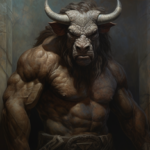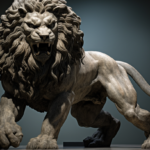Ever wondered why God created spiders?
Well, get ready to be amazed by the marvels of His creation.
In this article, you’ll discover the purpose behind these eight-legged creatures and unravel the secrets of their intricate web designs.
Explore the divine defense mechanism hidden within their venom and marvel at the miracle material that is spider silk.
Brace yourself for a journey into the incredible adaptations that make spiders truly extraordinary.
Key Takeaways
- Spiders play a crucial role in maintaining the balance and preservation of ecosystems through their hunting and pest control abilities.
- Spider silk, known for its strength and elasticity, is used to create intricate web designs that are influenced by factors like wind direction and prey capture efficiency.
- Spider venom has medical applications and shows promise in developing new drugs for conditions like erectile dysfunction, chronic pain, strokes, and cancer.
- Spider silk, one of the strongest materials in the world, has a wide range of applications in various industries and continues to inspire scientists and innovators worldwide.
The Purpose of Spiders in God’s Plan
Spiders serve a vital role in God’s plan by actively participating in the balance and preservation of ecosystems through their hunting and pest control abilities. Their behavior showcases divine intelligence, as they navigate their surroundings with precision and cunning. These remarkable creatures, created by God, have developed various techniques to catch their prey, such as spinning intricate webs or ambushing them with lightning-fast attacks. By doing so, they not only ensure their own survival but also contribute to the overall equilibrium of nature.
While spiders are skilled hunters, they aren’t without their own predators. God, in His infinite wisdom, has designed a world where every creature has its place and purpose. By providing food for larger animals, spiders become a part of God’s balance. They offer sustenance to creatures like birds, lizards, and other insectivores, allowing them to thrive and maintain the intricate web of life.
Now that we’ve explored the purpose of spiders in God’s plan, let’s delve into another fascinating aspect of their existence: the intricate web designs they create.
The Intricate Web Designs of Spiders
Ever wondered how spiders create their intricate web designs? It’s truly fascinating to witness the meticulous process of spider web construction. Here are some key insights into this remarkable feat:
- Silk Production: Spiders possess specialized glands in their abdomen that produce silk, a protein-based material known for its strength and elasticity. This silk is then extruded through spinnerets, small openings located at the rear of their bodies.
- Complex Patterns: Spiders have an innate ability to create intricate web designs, often characterized by radial spokes and concentric circles. These patterns are meticulously constructed by carefully placing strands of silk in specific configurations.
- Adaptive Techniques: Different species of spiders employ various web-building techniques to suit their needs. Some construct orb webs, which are circular and suspended between trees or other structures. Others prefer sheet webs, which are flat and spread across vegetation.
- Environmental Considerations: The design of spider webs is influenced by factors such as wind direction, prey capture efficiency, and camouflage. Spiders strategically choose locations and optimize their web designs to maximize their chances of successful hunting.
Understanding the intricacies of spider web construction sheds light on the remarkable abilities of these creatures. It also serves as a perfect segue into the subsequent section about spider venom: a divine defense mechanism.
Spider Venom: A Divine Defense Mechanism
Discover the power of spider venom, a divine defense mechanism designed to protect these creatures from potential threats. Spider venom, with its evolutionary origins dating back millions of years, has become a remarkable adaptation that enables spiders to survive in diverse environments. This venom isn’t only a means of capturing prey but also serves as a potent weapon against predators.
Spider venom is a complex mixture of proteins and peptides that varies among different spider species. Each venomous cocktail is tailored to the spider’s specific needs, targeting the nervous system, muscles, or blood of its victims. The venom acts swiftly, immobilizing prey or potential threats, ensuring the spider’s survival.
Beyond its role in nature, spider venom has also found medical applications. Researchers have discovered that certain components of spider venom possess unique properties that can be harnessed for the development of new drugs. For example, the venom of the Brazilian wandering spider contains a peptide that shows promise in treating erectile dysfunction. Other components have shown potential in treating chronic pain, strokes, and even cancer.
The remarkable properties of spider venom have captivated scientists and medical researchers alike. As we delve deeper into the mysteries of spider venom, we begin to understand its potential not only as a divine defense mechanism but also as a source of inspiration for medical breakthroughs.
Now, let’s explore another marvel of spider creation: spider silk, nature’s miracle material.
Spider Silk: Nature’s Miracle Material
You won’t believe the incredible strength and versatility of spider silk, a material that rivals the wonders of nature itself. Here are some mind-blowing facts about spider silk:
- Spider silk applications: Spider silk isn’t just another material. It has a wide range of applications that have captivated scientists and engineers. From creating high-performance textiles for protective gear to developing biomedical implants, spider silk has the potential to revolutionize various industries.
- Spider silk production: The production of spider silk is a remarkable process. Spiders spin silk from specialized glands in their abdomens, producing different types of silk for different purposes. This intricate process involves a combination of proteins and water, resulting in a material that’s both strong and flexible.
- Strength beyond imagination: Spider silk is known for its exceptional strength. In fact, it’s one of the strongest materials in the world, with a tensile strength comparable to steel. Pound for pound, spider silk is even stronger than Kevlar, the material used in bulletproof vests.
- Versatility like no other: Spider silk isn’t only strong, but it’s also incredibly versatile. It can be stretched, twisted, and molded into various shapes without losing its strength. This unique property makes spider silk an ideal material for applications ranging from wound healing to flexible electronics.
Spider silk truly is a marvel of nature, and its extraordinary properties continue to inspire scientists and innovators worldwide.
The Amazing Adaptations of Spiders
Spiders possess remarkable adaptations that enable them to thrive in diverse environments and fulfill their role in the ecosystem. Their incredible adaptations are evident in their vision and locomotion.
| Spider Vision | Spider Locomotion |
|---|---|
| Spider vision is an evolutionary marvel. | Spider locomotion showcases remarkable agility. |
| Spiders have multiple eyes, allowing them to detect motion and perceive depth. | Spiders use a combination of muscular and hydraulic systems to move with great precision. |
| Some spiders have excellent night vision, while others can see ultraviolet light. | Spiders can walk, run, jump, and even swim using their specialized appendages. |
| This gives them a unique advantage in locating prey and avoiding predators. | Their ability to move quickly and silently contributes to their hunting success. |
Spider vision is a marvel of evolution. Having multiple eyes allows spiders to detect motion and perceive depth, giving them a unique advantage in locating prey and avoiding predators. Some spiders even have excellent night vision, while others can see ultraviolet light, expanding their visual range even further.
Spider locomotion showcases their remarkable agility. Spiders use a combination of muscular and hydraulic systems to move with great precision. They can walk, run, jump, and even swim using their specialized appendages. Their ability to move quickly and silently contributes to their hunting success, ensuring their survival in diverse environments.
Frequently Asked Questions
Are All Spiders Venomous?
Not all spiders are venomous, but many species possess venom as a means of capturing and subduing their prey. Spider evolution and anatomy have contributed to the development of this unique and effective hunting mechanism.
How Do Spiders Create Their Intricate Web Designs?
Spiders create their intricate web designs through a fascinating process. They use their spinnerets to produce silk with unique properties. Over millions of years, the evolution of spider web designs has resulted in incredible variations and adaptations.
Can Spider Silk Be Used in Any Practical Applications?
Spider silk has numerous practical applications. In the medical field, it can be used for tissue regeneration and sutures. In the textile industry, it can be used to create lightweight, durable and flexible fabrics.
Do All Spiders Have the Same Adaptations?
Yes, all spiders have different adaptations. Spider anatomy varies, allowing them to perform various hunting techniques. These adaptations include venomous fangs, silk-spinning abilities, and specialized sensory organs for detecting prey.
Is There Any Scientific Evidence to Support the Claim That Spiders Were Created by God?
There is an existence debate and various religious interpretations about whether there is scientific evidence to support the claim that spiders were created by God.







